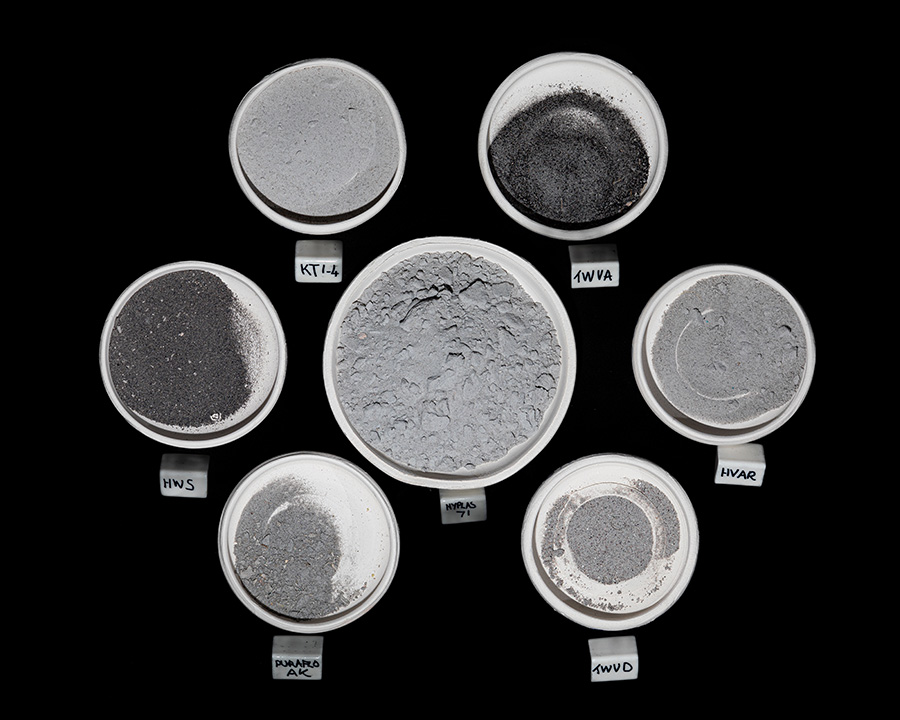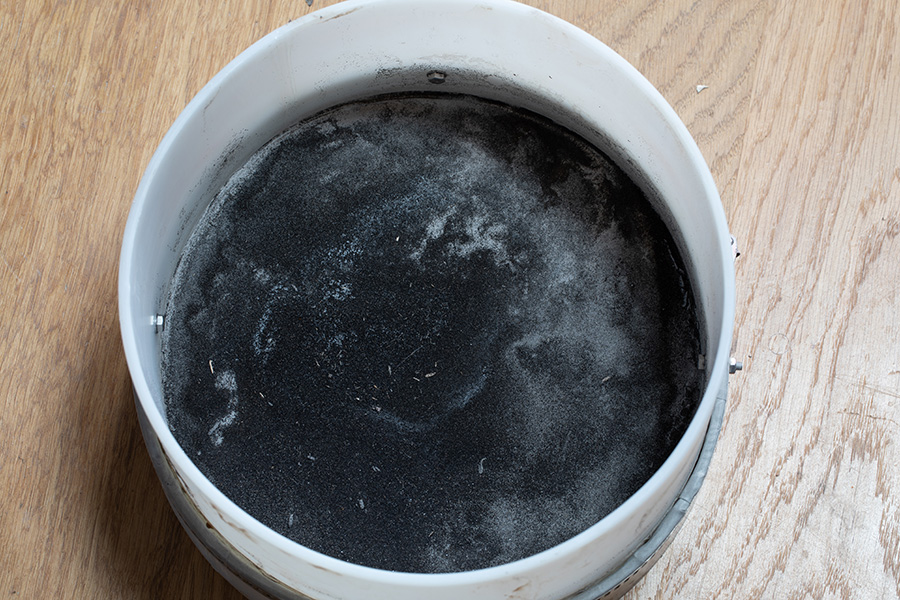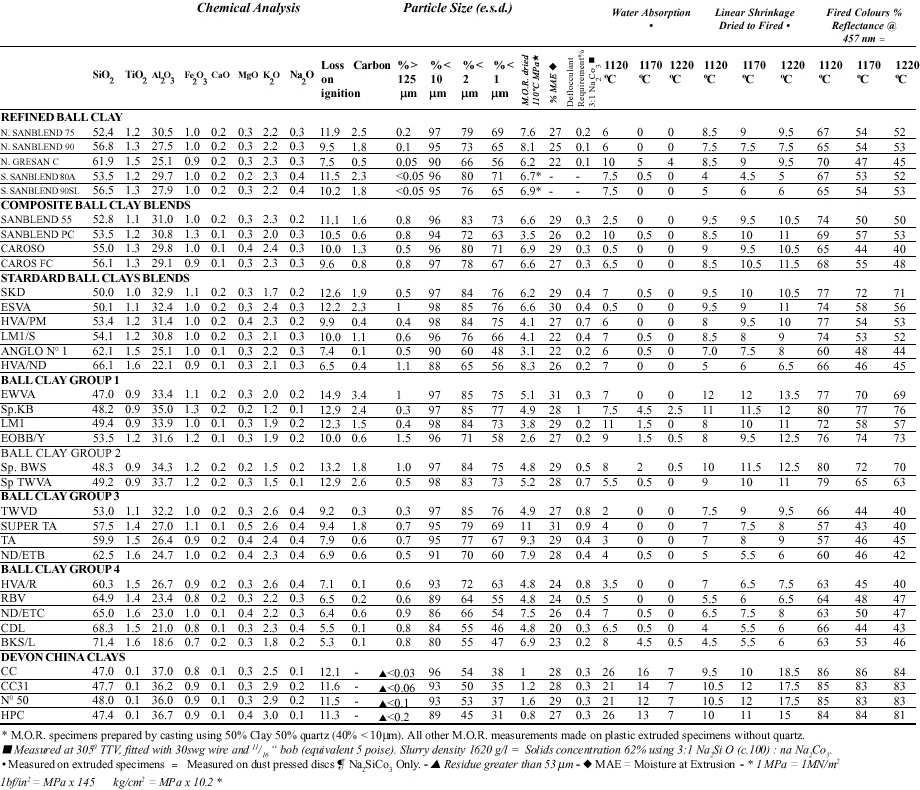Ball clays are an important constituent of my custom porcelain bodies. They influence the throwing characteristcs and exert a powerful influence on crystal growth. They tend to be minimally refined whole sediments containing coarse particles that have no place in a refined porcelain body. I took a number of clays from England and one from the USA a passed them through a 34μm (400 mesh) sieve.
The Clays
TWVA. A blend of Devon ball clays with medium plasticity. Low free silica content and carbonaceous.
Hywite Superb (HWS). A blend of Devon ball clays with medium plasticity. Low free silica content and carbonaceous.
Hyplas 71. A high plasticity Devon ball clay, high free silica and non-carbonaceous.
HVAR. A low plasticity non-carbonacoue Devon clay with medium free silica.
Puraflo AK. A medium plasticity Devon ball clay, low free silica and carbonaceous.
TWVD. A medium plasticity non-carbonaceous Devon clay with medium free silica.
KT#1-4. A blended Tennessee ball clay. Low plasticity, carbonaceous with intermediate silica.
Test Method
For each clay 1kg of dry powder was mixed with 1.5kg of water and blended to a uniform slip. This was passed through a 400 mesh screen and the residue collected, dried and weighed. Each sample was calcined at 1000°C and weighed again to establish LOI.
Results
| Clay | Residue [g] | Residue LOI [%] |
|---|---|---|
| TWVA | 7.2 | 22 |
| HWS | 10.0 | 37 |
| Hyplas 71 | 84.2 | 2 |
| HVAR | 10.9 | 4 |
| Puraflo AK | 3.8 | 8 |
| TWVD | 2.4 | 17 |
| KT#1-4 | 25.2 | 2 |

Dry residue.

Calcined residue.
Notes
Both the amount of residue and its loss on ignition vary widely. Batch to batch variations also occur and these results should be used with caution. The carbon content of Hywite superb and TWVA is clearly seen in the black residue, both turning to pale buff after calcining. Hyplas 71 has by far the most residue with very low LOI, the residue is a fine sand. In this test Puraflo AK left 3.8g on the sieve, the batch was from a 25kg bag obtained from Valentine Clays in 2016. A more recent batch from Potterycrafts in 2024 yeilded 20.2g of residue, so clearly there are large variations.

Residue from 1kg of Puraflo AK powder (2024, Potterycrafts) on a 400 mesh screen.

Closeup of the dried Puraflo AK residue.

Some useful data on ball and china clays. I’m not certain of the origin of this. I think it was produced by the now defunct English China Clays.
